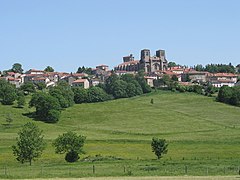
The Benedictines, officially the Order of Saint Benedict, are a mainly contemplative monastic religious order of the Catholic Church for men and for women who follow the Rule of Saint Benedict. The male religious are also sometimes called the Black Monks, in reference to the colour of their religious habits, in contrast to other Benedictine orders such as the Olivetans, who wear white. They were founded in 529 by Benedict of Nursia, a 6th-century Italian monk who laid the foundations of Benedictine monasticism through the formulation of his Rule. Benedict's sister, Scholastica, possibly his twin, also became a religious from an early age, but chose to live as a hermit. They retained a close relationship until her death.

The Celestines were a Roman Catholic monastic order, a branch of the Benedictines, founded in 1244. At the foundation of the new rule, they were called Hermits of St Damiano, or Moronites, and did not assume the appellation of Celestines until after the election of their founder, Peter of Morone, to the Papacy as Celestine V. They used the post-nominal initials O.S.B. Cel. The last house closed in 1785.
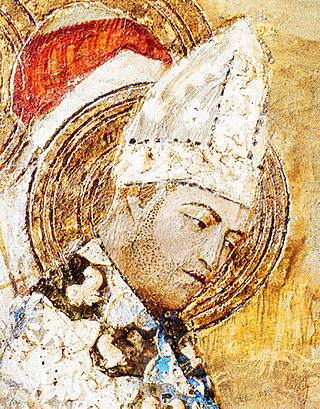
Pope Clement VI, born Pierre Roger, was head of the Catholic Church from 7 May 1342 to his death, in December 1352. He was the fourth Avignon pope. Clement reigned during the first visitation of the Black Death (1348–1350), during which he granted remission of sins to all who died of the plague.
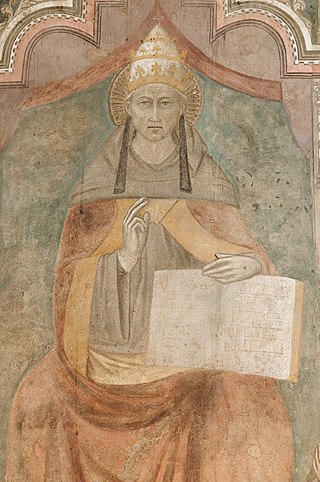
Pope Celestine V, born Pietro Angelerio, also known as Pietro da Morrone, Peter of Morrone, and Peter Celestine, was head of the Catholic Church and ruler of the Papal States for five months from 5 July to 13 December 1294, when he resigned. He was also a monk and hermit who founded the order of the Celestines as a branch of the Benedictine order.

Odo of Cluny was the second abbot of Cluny. He enacted the various Cluniac Reforms of France and Italy. He is venerated as a saint by the Catholic and Eastern Orthodox Churches. His feast day is 18 November.

Cluny Abbey is a former Benedictine monastery in Cluny, Saône-et-Loire, France. It was dedicated to Saint Peter.
The Cluniac Reforms were a series of changes within medieval monasticism in the Western Church focused on restoring the traditional monastic life, encouraging art, and caring for the poor. The movement began within the Benedictine order at Cluny Abbey, founded in 910 by William I, Duke of Aquitaine (875–918). The reforms were largely carried out by Saint Odo and spread throughout France, into England, and through much of Italy, northern Portugal and Spain.
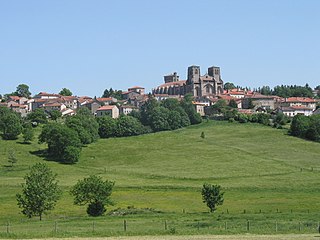
La Chaise-Dieu is a commune in the Haute-Loire department in south-central France. Its inhabitants are called Casadéens, from the Latin name of the city.

Pietro Igneo was an Italian Roman Catholic Benedictine monk from the Vallombrosians branch. He also served as a cardinal and was named as the Cardinal-Bishop of Albano. He is often referred to as a member of the Aldobrandini house but this familiar denomination is not attested in sources as a fact.
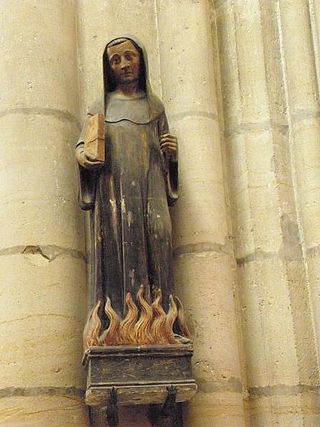
Odilo of Cluny was the 5th Benedictine Abbot of Cluny, succeeding Mayeul and holding the post for around 54 years. During his tenure Cluny became the most important monastery in western Europe. Odilo actively worked to reform the monastic practices not only at Cluny, but at other Benedictine houses. He also promoted the Truce of God whereby military hostilities were temporarily suspended at certain times for ostensibly religious reasons. Odilo encouraged the formal practice of personal consecration to Mary. He established All Souls' Day in Cluny and its monasteries as the annual commemoration to pray for all the faithful departed. The practice was soon adopted throughout the whole Western church. He was lifelong friends with William of Dijon, another Cluniac abbot and reformer.
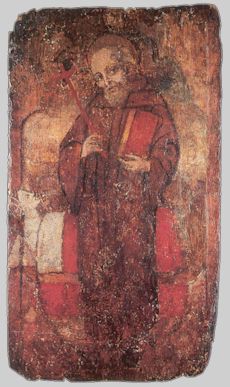
Silvestro Guzzolini was an Italian Catholic priest and the founder of the Silvestrini. He served as a canon in Osimo but respectful rebukes of his bishop's inappropriate conduct led him to leave for a hermitage before the bishop could strip him of his position. He remained in his hermitage with a determination to found a religious congregation and based it upon the Order of Saint Benedict after having a dream of Benedict of Nursia. His order received papal approval from Pope Innocent IV which allowed his order to expand across Italian cities to a significant degree.

The Diocese of Le Puy-en-Velay is a Latin diocese of the Catholic Church in France. The diocese comprises the whole Department of Haute-Loire, in the Region of Auvergne-Rhône-Alpes. Currently the diocese is a suffragan of the Archdiocese of Clermont. Last bishop, as of April 2015 was bishop Luc Crépy. Actually is bishop in Versailles, Since February 2021. The current bishop, as of March 2022 is Yves Baumgarten.

Blessed Hemming of Turku was a Swedish Roman Catholic bishop and served as the Bishop of Turku from 1338 until 1366. He was born in Sweden though relocated to Finland following his appointment as bishop. He became a popular figure in the diocese for his staunch dedication to the educational and spiritual needs of the faithful. He was also a close friend of Saint Bridget of Sweden. During his studies he knew the future Pope Clement VI as one of his classmates.

Augustin Kažotić was a Croatian prelate of the Catholic Church and professed member from the Order of Preachers who served as the Bishop of Lucera from 1322 until his death. Kažotić was a humanist and orator who had served first as the Bishop of Zagreb from 1303 until 1322. Kažotić studied in Paris before returning to his homeland where he began working in the missions and preaching in modern Bosnia. He was one of the first humanist figures to appear in southern Croatia.

Andrea Franchi was an Italian Roman Catholic member of the Order of Preachers who served as the Bishop of Pistoia before his resignation due to ill health. Franchi became a noted preacher and evangelist who was also known for his holiness and his deep commitment to the poor of his diocese.
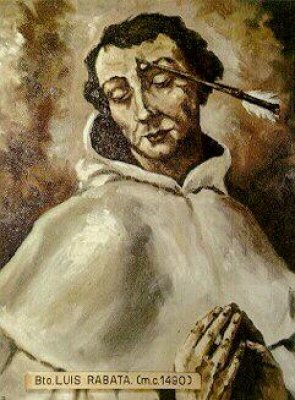
Luigi Rabatà, O.Carm was an Italian Roman Catholic priest from the Order of Carmelites. He served as prior of his convent of Randazzo until his death which occurred after an attack in which an arrow was shot into his head.

Ugolino da Gualdo Cattaneo was an Italian Roman Catholic professed religious and friar of the Order of Saint Augustine. Ugolino is best known for founding an Augustinian convent in Gualdo Cattaneo in 1258 where he served as its prior until his death. He practiced a rigorous spiritual life with austerities including frequent bouts of strict silence and fasting.

Elena Duglioli was an Italian Roman Catholic aristocrat from Bologna noted for her devotion to Christian life and social teachings. Duglioli wanted to become a nun for the Poor Clares but instead married in order to please her parents. Duglioli is best known for commissioning a chapel with an image of Saint Cecilia to whom she was devoted.
Giovanni Pelingotto was an Italian Roman Catholic member of the Secular Franciscan Order who hailed from Urbino and lived his life as an almsgiver and hermit. Pelingotto served in his father's business before he quit and provided as much alms as he could provide to the less fortunate in his area. This led him into contact with the Franciscans which served to open him to a greater plane of servitude to God and the poor.

The Abbey of La Chaise-Dieu, in Auvergne, is a former Benedictine abbey, headquarters of the Casadean order, located in the commune of La Chaise-Dieu in the department of Haute-Loire.

